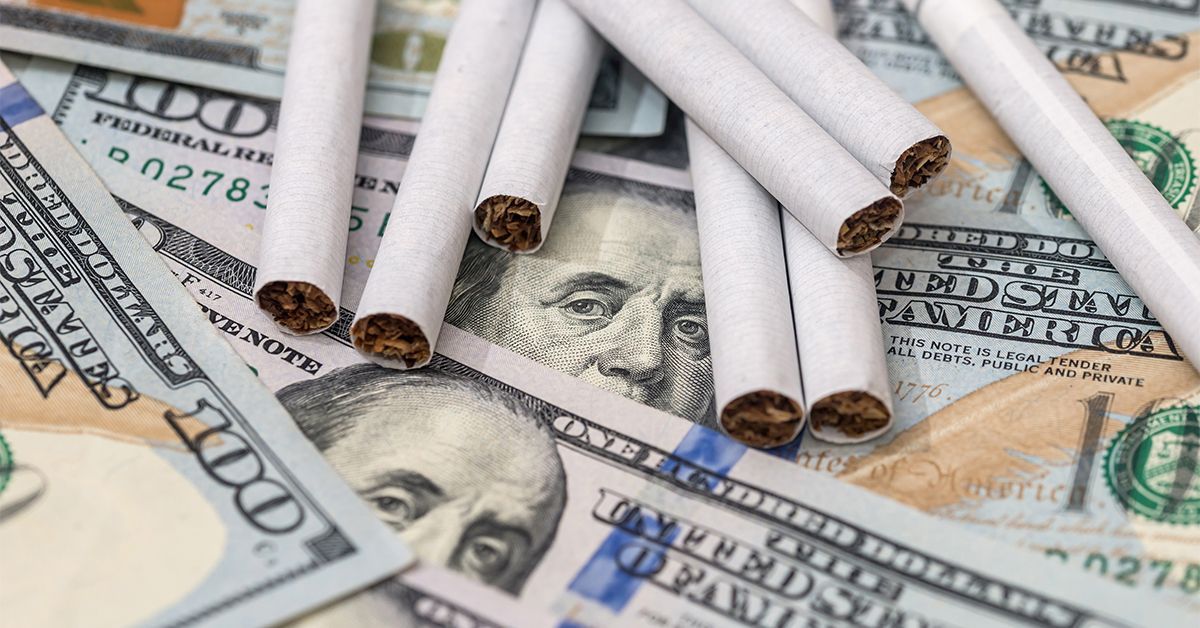More Smokers Quit After Big Hike in California Tobacco Tax
When tobacco taxes go up, more people quit, especially when the increase is big
Story by:
Published Date
Story by:
Topics covered:
Share This:
Article Content
Researchers from University of California San Diego and UC San Francisco have found that Proposition 56, a major tobacco tax increase that was overwhelmingly approved by California voters in 2016, was associated with a significant increase in smoking cessation over the next three years. The study, published in the Journal of the National Cancer Institute, also reported significant differences in state tobacco spending and the proportion of people smoking daily.
“California’s tax increase was over 200%, and tobacco companies largely passed the increase on to their customers,” said Shu-Hong Zhu, Ph.D., a professor at the Herbert Wertheim School of Public Health and Human Longevity Science at UC San Diego and lead author of the study. “The resulting price hike likely motivated a lot of smokers to quit.”
Though the health impacts are well known, in 2022, 49.2 million (19.8%) — or nearly 1 in 5 — U.S. adults reported actively using tobacco. One strategy that many states have used to incentivize people to stop smoking is to increase taxes on tobacco products.
California Proposition 56 increased the state tobacco tax by $2 per cigarette pack, and much of the additional revenue generated through the tax was funneled back into the state’s tobacco prevention efforts.
To analyze the impact of the tax, the researchers utilized data from the Behavioral Risk Factor Surveillance System at the U.S. Centers for Disease Control and Prevention to determine smoking cessation rates before and after the tax. Cessation rate, also known as quit rate, was defined as the percentage of survey respondents who smoked within the last year, but had quit for at least three months.
They found that:
- The three-month quit rate in California increased from 11.5% in the three years prior to the passage of Proposition 56 to 14.2% in the three years after.
- Smoking quit rates were nearly unchanged in the 18 other states (including the District of Columbia) that raised their tobacco taxes at least once during the study period.
- In the 32 states that did not raise tobacco taxes, quit rates declined significantly, from 9.5% to 9.0%.
- California saw a 271.9% increase in tobacco prevention spending per capita in the study period. In contrast, other states that raised taxes saw a 12.8% decrease in spending, while states that did not raise taxes saw an 11.2% decrease.
- Even among those who did not quit, the percentage of daily smokers decreased.
“Raising tobacco excise taxes is one of the main public health tools for reducing smoking prevalence. But to achieve a measurable increase in quitting on a population level, you may have to go big.”
The researchers hypothesize that the large increase in cessation in California is a result of the price change in cigarettes after the tax. In the three years following Proposition 56, the average price of cigarettes in California was 30.8% higher than in the three years before the initiative passed, after adjusting for inflation. In contrast, prices only increased by 6.3% on average across the 18 other states that raised their taxes.
However, the researchers also note that these two factors are interrelated, so it’s difficult to parse out the precise reason for the change.
“We don’t know what’s more responsible for the increase in quitting in California, whether it’s the tax increase itself or the increased spending on prevention that the tax enabled,” added Zhu.
Either way, the results in California are promising and speak to the impact of tobacco tax increases on public health.
“Many Californians have advocated for years to increase the tobacco tax and shore up funding for tobacco prevention,” said Michael Ong, M.D., Ph.D., a professor of medicine and health policy and management at UCLA and chair of the Tobacco Education and Research Oversight Committee, which advises the California Tobacco Prevention Program. “This study shows one of the many ways we are reaping the rewards of that effort in California — by meaningfully increasing successful quitting.”
On the other hand, the researchers suggest that the results from other states offer a cautionary message: that creating meaningful change in tobacco usage requires a significant commitment by state governments.
“Raising tobacco excise taxes is one of the main public health tools for reducing smoking prevalence,” Zhu explained. “But to achieve a measurable increase in quitting on a population level, you may have to go big.”
Read the full study.
Additional study authors include Christopher Anderson and Yue-Lin Zhuang at UC San Diego Moores Cancer Center, Hai-Yen Sung at the Institute of Health and Aging at UC San Francisco, and Anthony Gamst at the Computational and Applied Statistics Laboratory in the San Diego Supercomputer Center and Department of Mathematics at UC San Diego.
This research was funded by the California Department of Public Health (contract #CDPH-22-1008).
Disclosures: The authors report no competing interests
You May Also Like
ALERTCalifornia Awarded 2025 Special Achievement in Geographic Information Systems (GIS) by Esri
Science & EnvironmentStay in the Know
Keep up with all the latest from UC San Diego. Subscribe to the newsletter today.




